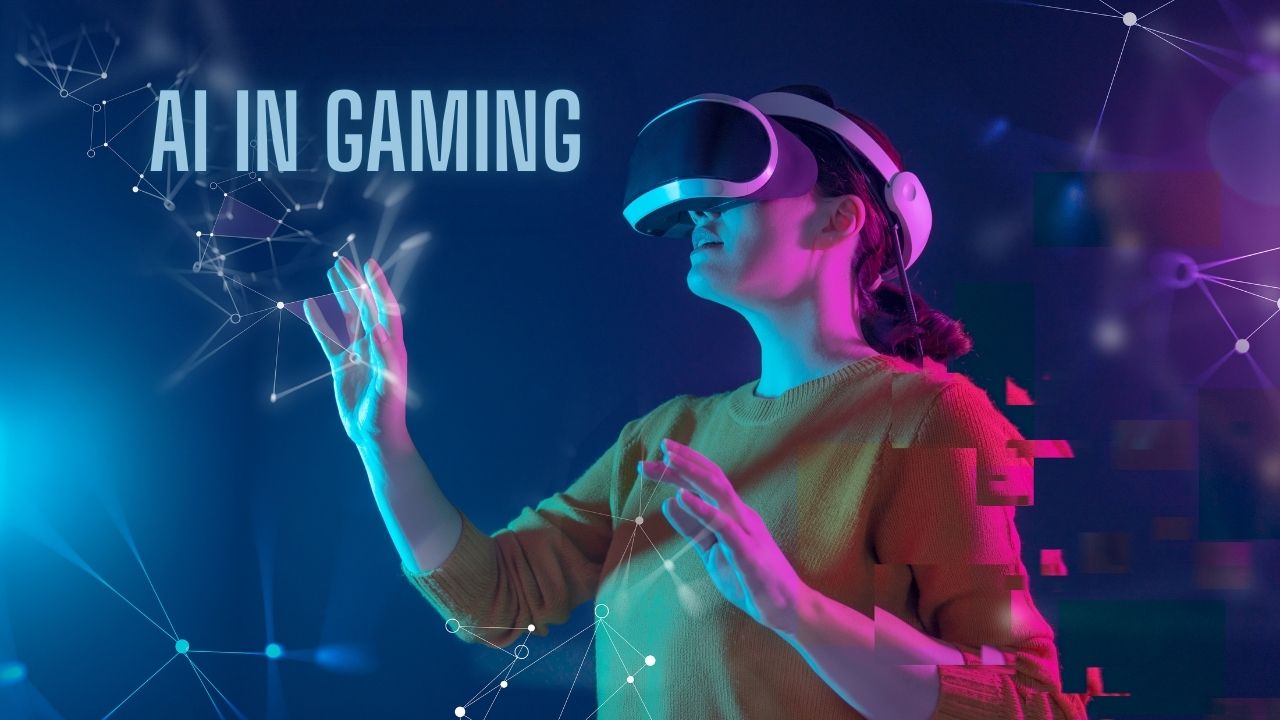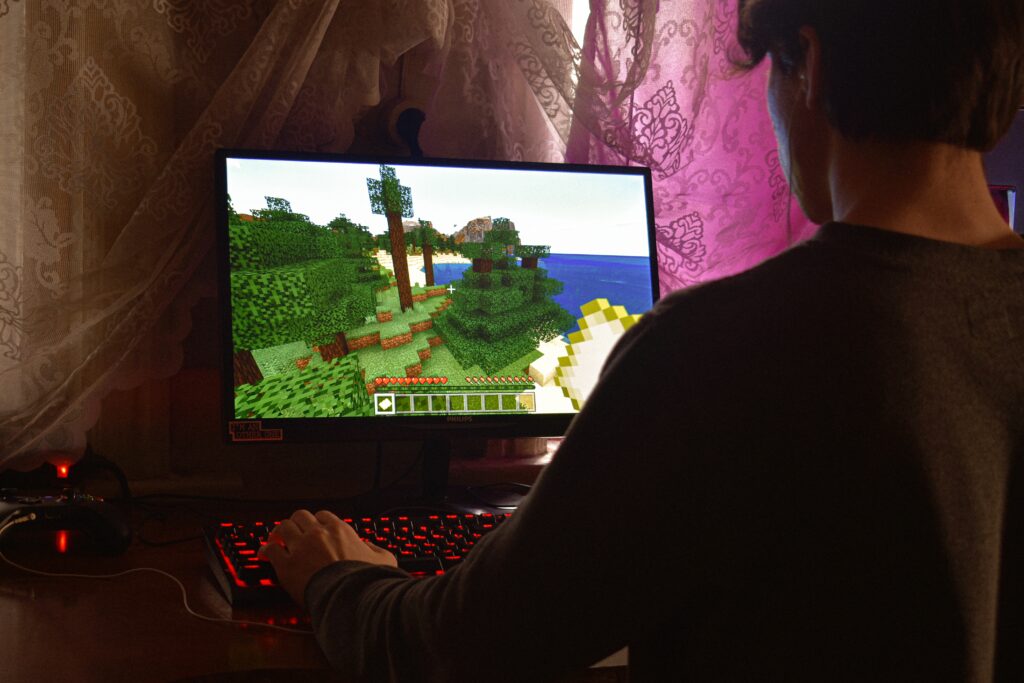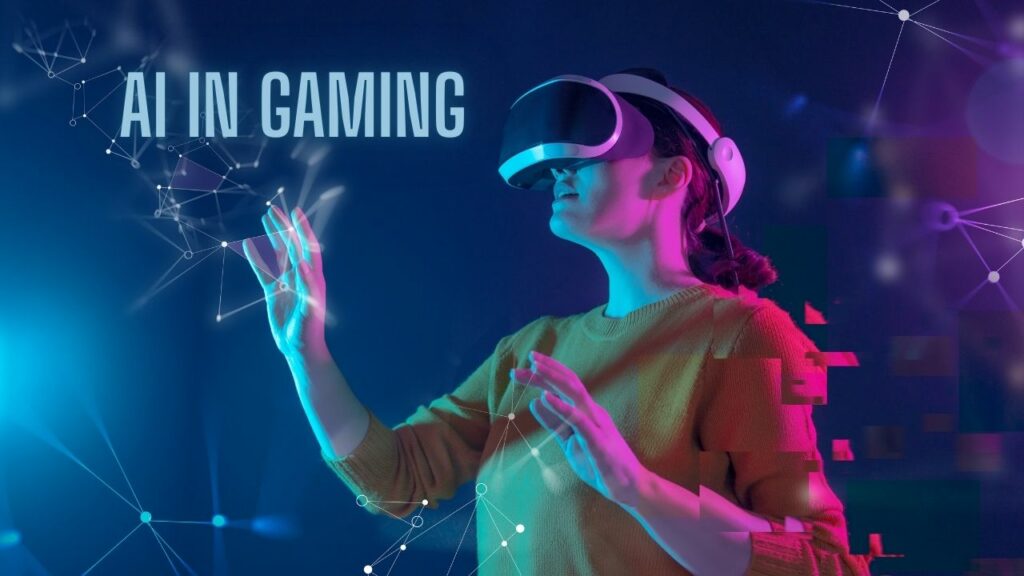 Artificial Intelligence (AI) has revolutionized the gaming industry, providing developers with tools to create immersive, interactive experiences. From NPC behavior to personalized gameplay, AI in gaming has opened up a world of possibilities. In this article, we’ll explore the role of AI in gaming and its impact on the industry.
Artificial Intelligence (AI) has revolutionized the gaming industry, providing developers with tools to create immersive, interactive experiences. From NPC behavior to personalized gameplay, AI in gaming has opened up a world of possibilities. In this article, we’ll explore the role of AI in gaming and its impact on the industry.
What is AI in Gaming?
Game developers use artificial intelligence to create games that are more responsive, adaptive, and demanding. Moreover, they are key to creating a more immersive environment.
For example, developers use artificial intelligence to enable video game characters to behave in a way that is realistic to human behavior. Common examples are adversaries and non-playable characters (NPCs),
Academics contend that gaming AI is not true artificial intelligence, but the excitement surrounding the technology has been steadily building for a long.
It has evolved into a crucial idea in numerous video games. One major example is Cortana from the hit video game Halo. Some video games have plots that center on artificial intelligence and human androids, such as Detroit Become Human.
Why does AI matter in gaming?

Using AI, games and the developing mobile gaming industry may provide its players with a better experience. Game developers seek to create exciting gameplay by adding realistic scenario developments in games.
The intricacy of AI-powered games increases player engagement. Gamers expect an immersive experience across a variety of platforms with the rise of new gaming gadgets. With AI, developers can offer a console-like experience on all platforms.
Data mining
Artificial intelligence in gaming enables game developers and studios to do data mining on player behavior. This can aid in their understanding of how players arrive at the game, the features they engage with most frequently, and the reasons they leave the game. As a result, game designers can enhance gameplay or find income options.
Procedural content generation
In video games, artificial intelligence may automatically produce fresh material, interactive tales, setting details, levels, and even music.
Player experience modeling
Game developers can also utilize artificial intelligence to determine different aspects of a player. This can be their skill level or emotional condition. These developers can use this information to further modify the game.
This might even entail dynamic difficulty balancing. Difficulty balancing is where the player’s skill determines how challenging the game will be in real time. In-game AI might even help in determining the player’s intention.
How is Artificial Intelligence in Gaming Evolving?

Pathfinding and finite state machines have historically been the main applications of AI in video games. Programming called pathfinding instructs an AI-controlled NPC where it can travel and where it cannot.
This is still crucial in everything from enormous open-world RPGs to 8-bit retro games. The people in a town that developers are building shouldn’t be able to go through barriers or become stuck in the ground.
On the other hand, finite state machines enable the AI to modify its behavior in response to particular circumstances. The antagonistic soldiers in the Metal Gear Solid series are a fantastic illustration of this in action.
All of the enemies in the vicinity start to gather around you and attack as soon as you get in their line of sight and become noticed. The guards must lose sight of you and remain hidden long enough for them to stop pursuing you and take up their starting positions. The “Chase” state and the “patrol” state are effectively two distinct states. These may seem like simple notions, but they underpin the majority of AI programming done today.
Another example is The Sims series. The artificial intelligence programming in this game enables Sims characters to accomplish certain tasks given a new state. For example, when a user’s Sim gets hungry, they feed it. When their Sim gets tired, they put it to bed.
How is AI changing?

The sheer quantity of pathfinding and states that developers may add to NPCs has already significantly altered it. After all, there are enormous differences between Pacman and Skyrim.
Yet, the world of AI in gaming is about to undergo a radical transition. This is thanks to the same AI technology that experts from other industries are already using to develop self-driving cars and detect faces.
Pathfinding may eventually involve more than just directing an AI. AI might build full, realistic landscapes from the ground up, instantly determining which walls it can and cannot go through.
With recent findings from experimental AI at Expressive Intelligence Studio, data scientists are moving closer to their goal of building actual emotions into AI, something they have aspired to for years. Once they are successful, we might soon see these AI in video games. Artificial intelligence developers and programmers find challenges in innovating the foundational idea of states and pathfinding.
What are the kinds of AI in games?
Deterministic AI techniques

The most frequently utilized AI in video game techniques is deterministic. Deterministic performance or behavior is easy to predict. Experts often call it predetermined behavior.
These procedures don’t entail any element of uncertainty. They are comparatively quick to implement and simple to comprehend, test, and troubleshoot. The problem is that deterministic approaches require programmers to foresee every case and code every potential behavior.
These techniques don’t even permit learning or evolution. This limits the play-life of the game and renders the game’s behaviors predictable after a little period of gameplay.
Nondeterministic AI techniques
This behavior essentially goes against deterministic behavior. Uncertainty exists in nondeterministic behavior. It usually occurs depending on what AI developers choose to use for their projects. Just observe an NPC that picks up on a player’s strategies and changes to counter them if you want to understand what this is all about.
An AI developer can employ a neural network, Bayesian method, or genetic algorithm for this type of learning. The designers of the game won’t even need to foresee every circumstance and write the behaviors to fit it.
Even better, these techniques encourage emergent behavior—behavior that develops without explicit instructions—by learning and extrapolating on their own.
AI in Gaming: Pros

We can expect shorter development cycles as AI becomes more capable of carrying an increasing share of the load. The sophistication of created settings and characters will increase.
To make the games more immersive, you won’t see random NPCs wandering around with one or two states anymore. Instead, they will have a wide range of activities available to them.
If NPCs exhibit realistic emotions, it alters how players can communicate with them. You can learn to genuinely care about the people in the town you’re guarding, or you can learn to despise the evil foe who evades your advances until you ultimately vanquish them.
Using AI in Game Development

In a few short years, people all over the world can start to notice AI playing a more and bigger part in game development as well as in the game itself.
Recent deep-learning experiments have made it possible for AI to memorize a collection of pictures or text. They can then use what it has learned to simulate the experience. AI is also used by experts to create Picasso-like artworks and emails. When employed, the product appears to be a human-made output.
Another example is when an AI program was able to program a playable level of a game. It only used images in an experiment employing the same technology that is now applied to game creation.
Also, the advancement of facial recognition software and deep fake technology appears to have significant potential for the future of development cycles. An AI can recognize and utilize several faces that it has scanned thanks to deep fake technology.
Even though it’s still in its early stages, many people have used facial recognition AI to create lifelike 3D models. Looking even further ahead, it’s certainly conceivable that an AI would be able to employ a mix of these technologies. If they do, they can create a whole game from scratch, without the need for any developers at all.
AI in Gaming: Cons
Game developers have less control over AI as it becomes more sophisticated. As a result, audiences can expect that developers may sacrifice quality over quantity. An example of this is replacing meticulously designed game settings with something more simple and even robotic.
It might be comparable to how gamers can frequently identify if a game used Unity’s stock assets. Essentially, the overall gaming experience changes.
It also implies that when developers use flawed AI programming, we might see some clunkier games. For instance, the AI adversaries in Aliens: Colonial Marines behaved strangely and oddly, which ruined the immersion.
There’s a chance that when AI becomes more capable of handling game programming on its own. If it does, it will have an impact on the careers of many game developers already employed in the sector. All of these issues are important to think about as we proceed into new territory.
What is the future of AI in the gaming industry?
The design and development of artificial intelligence in video games have advanced significantly, and it continues to do so.
- A technique known as cloud gaming allows users to play games online without having to download and install them first.
- Gaming on blockchains is currently a relatively unknown subject. It suggests that in order to play these games, gamers and developers must collaborate on the blockchain platform.
- The way we view gaming will alter as a result of the use of auditory recognition in games. By utilizing speech recognition technology in gaming, users can control the game, monitor their gameplay, and potentially eliminate the need for a physical controller.
- The advancement of AR, VR, and MR technology has raised the bar for immersive games based on virtual reality and mixed reality, making them more realistic and forward-thinking in terms of entertainment. The best example of a wearable gaming device is the all-in-one PC-quality virtual reality headset Oculus Quest.
- A player can access an infinite number of games with the convenience of their location thanks to the increasing trend of mobile gaming. The development of devices that are compatible with high resolution and complex graphics has been a focus for phone makers.
FAQs
What is the difference between the AI used in games and in other areas?
“Game AI” frequently concerns a half-dozen rules of thumb, or heuristics. These rules are adequate to provide a satisfying gameplay experience. “Real AI” handles fields like machine learning, decision-making based on any data input, and even the ultimate objective of powerful AI that can reason.
How does AI perform in gaming?
Artificial intelligence in gaming enables game developers and studios to do data mining on player behavior. This aids in their understanding of how players arrive at the game, the features they engage with most frequently, and the reasons they leave the game.
How can a video game enemy AI be improved with deep learning?
Game developers can train deep learning algorithms to spot trends in the behavior of players. They can also use that knowledge to develop more sensible tactics. For instance, the AI can develop the ability to predict the player’s moves, attack patterns, and weak points in order to modify its own strategy.





